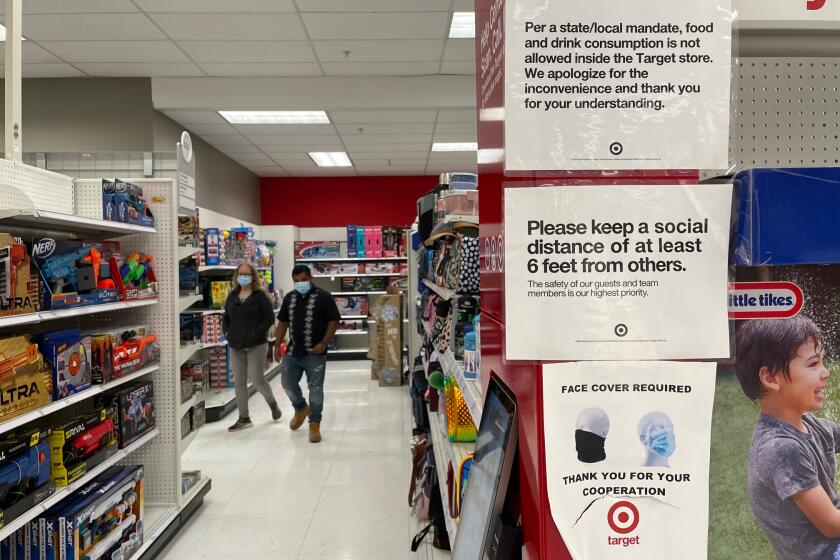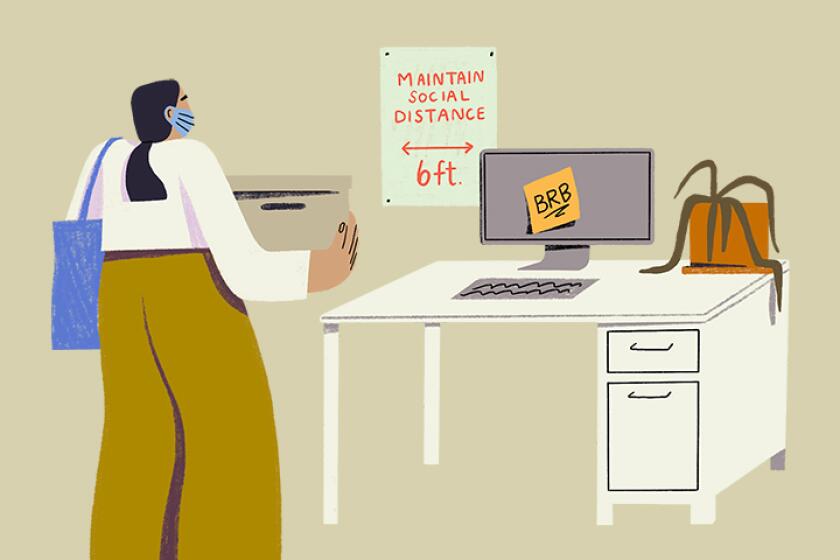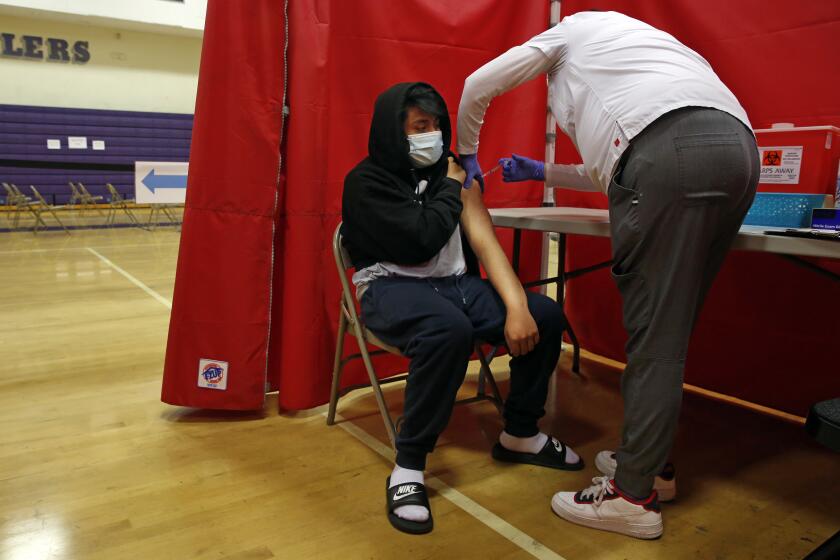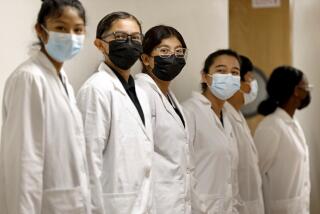California unveils sweeping plan for full reopening on June 15 as COVID fades
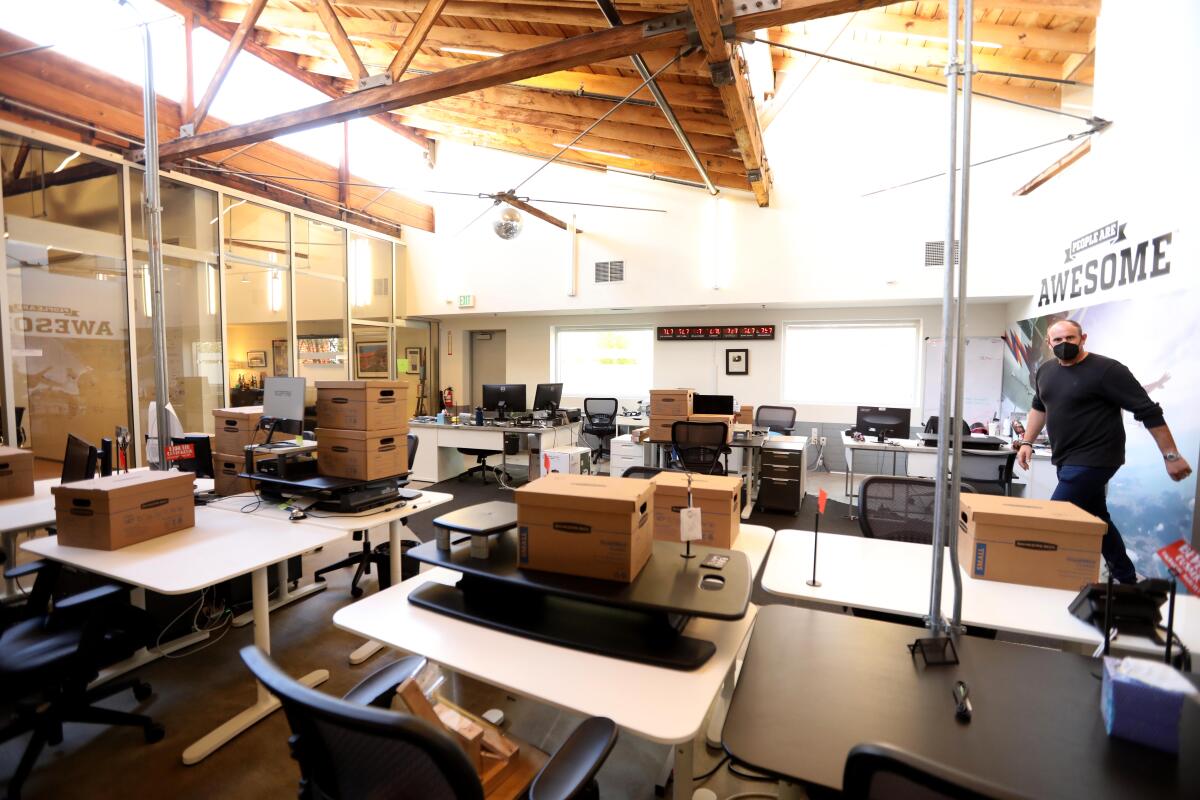
- Share via
State officials on Friday unveiled perhaps their most eagerly anticipated pandemic-related guidelines, which will steer California into a new, fully reopened age.
Come June 15, Californians will wake up to a world that looks nothing like the last year-plus — one where businesses can open their doors without COVID-19 constraints on capacity or requirements for physical distancing, and where people who are fully vaccinated no longer need to wear masks in most situations.
California also will align with recommendations from the federal Centers for Disease Control and Prevention when it comes to travel, according to Dr. Mark Ghaly, the state’s Health and Human Services secretary.
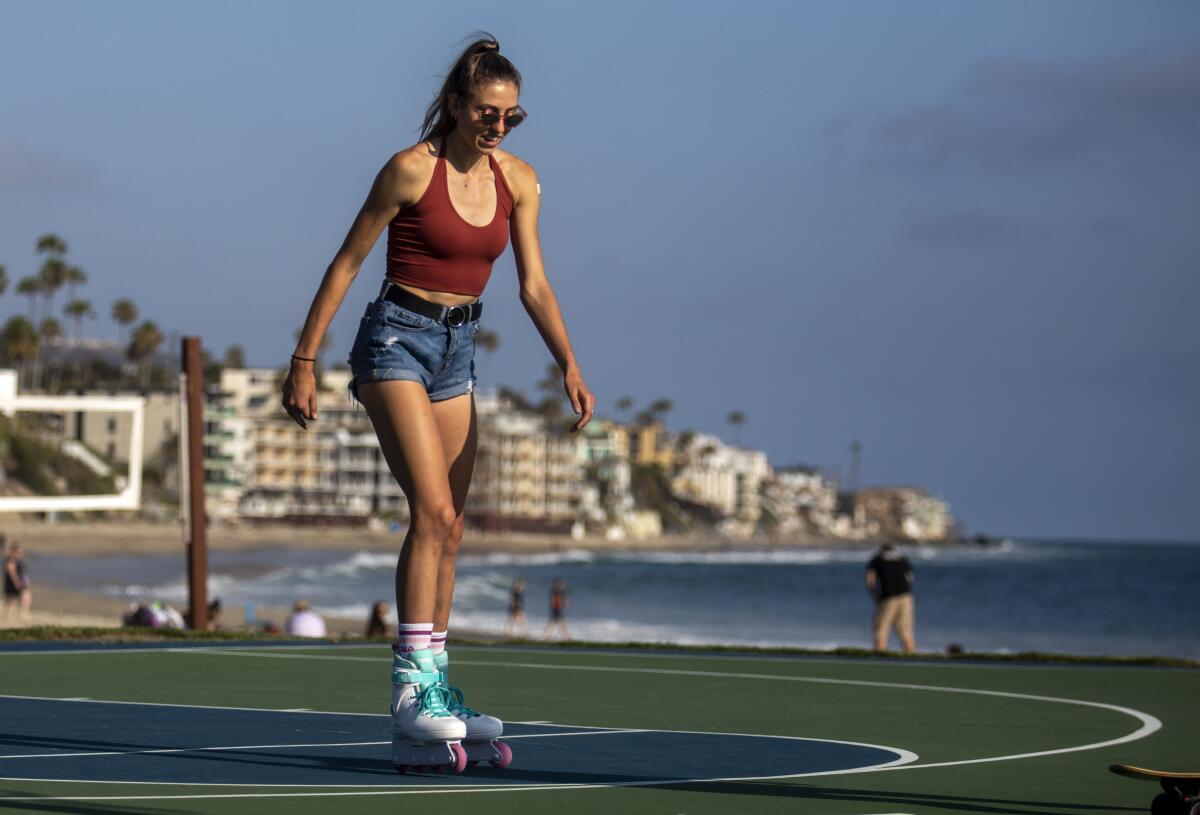
“The big message today is we’re at a place with this pandemic where those requirements of the past are no longer needed for the foreseeable future,” he said during a briefing.
Regardless of the updated regulations, the state will not be eliminating COVID awareness. Ghaly emphasized that “we will be watching closely to determine if and when we need other public health protections to come back into place.”
Gov. Gavin Newsom foreshadowed the announcement Thursday, telling reporters that, with the new guidance, “people can really paint that future and see themselves in it: Post-masks and post-any modification in this blueprint,” referring to the system of color-coded tiers that has guided reopenings statewide for the last nine months .
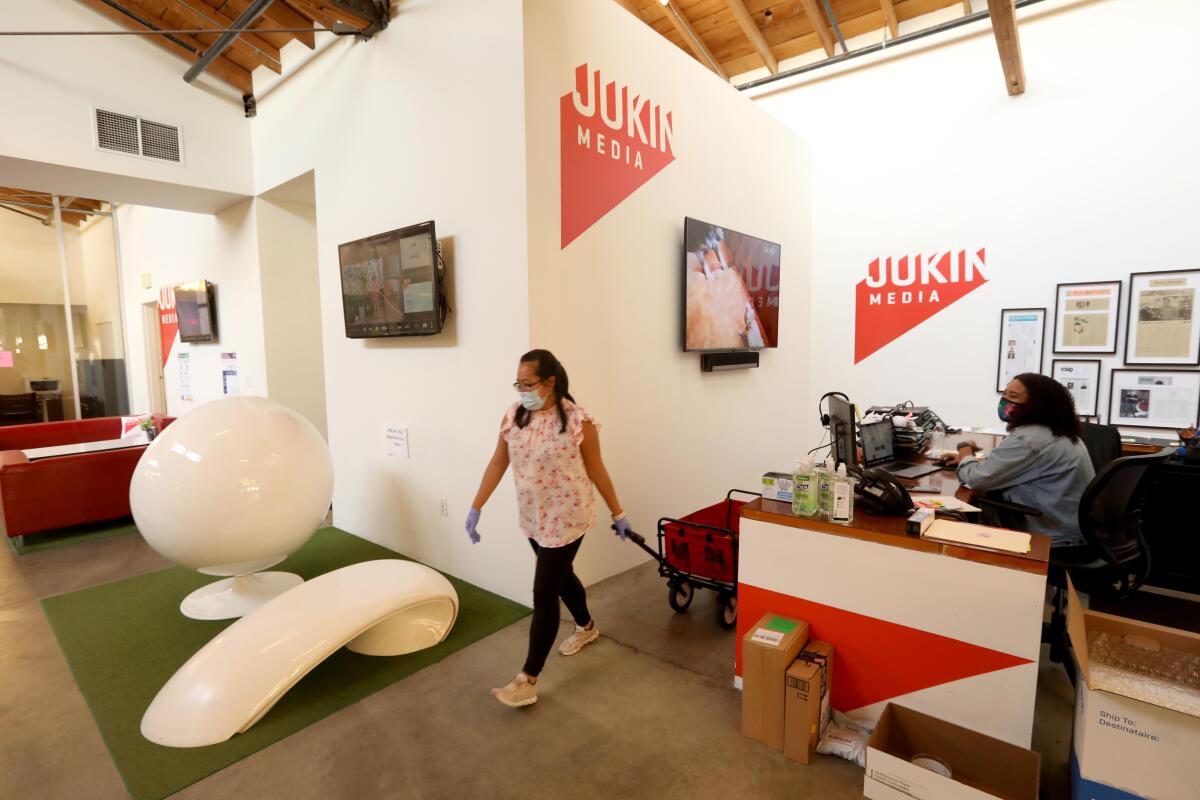
Though June 15 has been billed as California’s full reopening date, it remained somewhat unclear until now under what circumstances modifications might remain.
Initially, the plan was to keep the state’s mask mandate in place, but officials this week instead announced that Californians who are fully vaccinated against COVID-19 will be allowed to go mask-free in most indoor settings starting June 15 — a move that will bring the state into alignment with recent CDC guidance.
Employers also will still be subject to any relevant standards handed down by the California Division of Occupational Safety and Health, known as Cal/OSHA.
The state Occupational Safety and Health Standards Board was scheduled Thursday to consider a proposal that would have allowed workers to return to their jobs without social distancing or face masks as long as everyone in a room is vaccinated, but members postponed a decision given the changes coming next month.
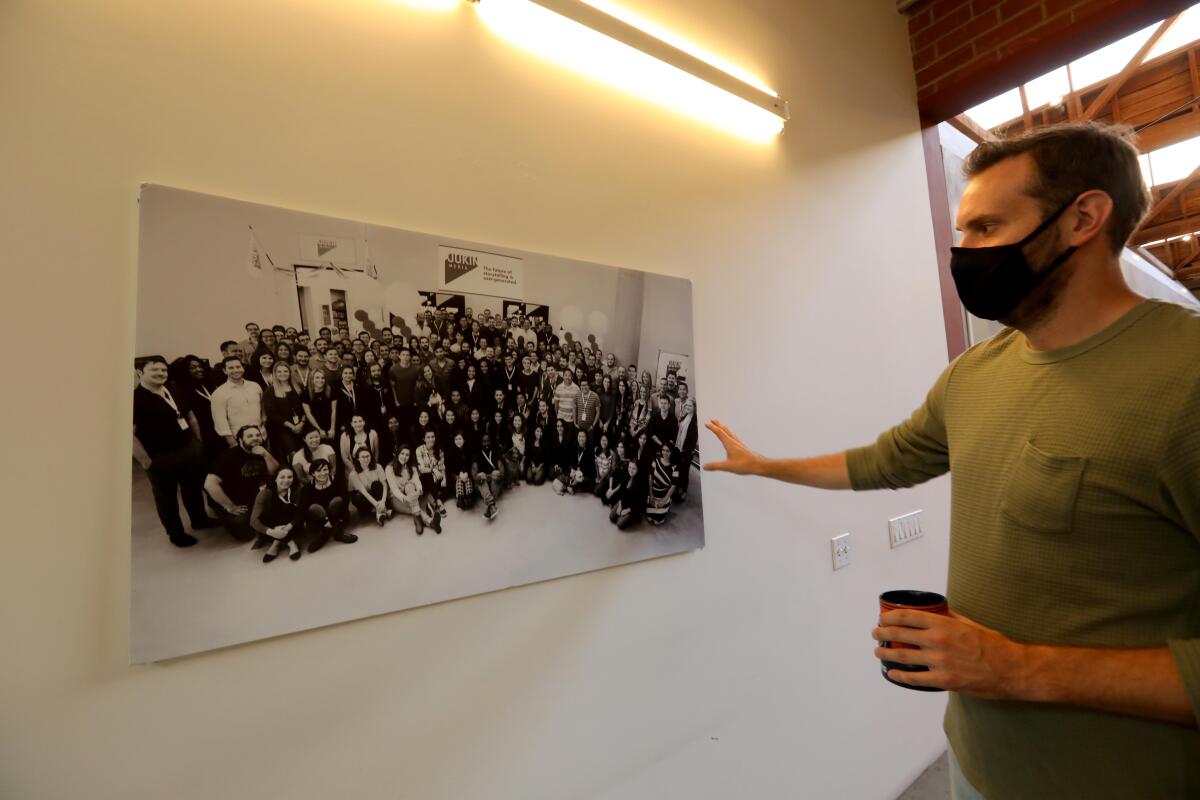
A full reopening also doesn’t necessarily mean an immediate return to pre-pandemic normal. Some people may still opt to wear masks or otherwise moderate their behavior to minimize risk. And working from home could become more common at some companies.
“The last 14 or 15 months have been transformational — not only from a health perspective, but from an economic perspective as we’ve seen things like remote work and new tools for jobs and workplaces rethink how they operate,” Dee Dee Myers, senior advisor to Newsom and director of the Governor’s Office of Business and Economic Development, said during Friday’s briefing. “And so I think we’re still in the middle of that transition, and we’re not sure what the ‘next normal’ is going to look like.”
For now, California workers must continue to wear masks and practice physical distancing — either in a room or outside.
It’s also conceivable that some proprietors could decide to require customers or event attendees to prove they’ve either been vaccinated or recently tested negative for coronavirus infection.
“I do think that there will be some businesses that decide to require some level of verification of vaccination in order to really have all of their patrons feel comfortable,” Ghaly said. “That isn’t something that’s going to be driven from the state necessarily, but that might be an operational decision. And we’re trying to be ready to support individuals who want to do that thoughtfully and responsibly.”
One area where there will be additional state requirements is high-attendance indoor events.
California will require organizers of indoor events with more than 5,000 people to verify that attendees are either vaccinated or have recently tested negative, according to Ghaly.
The state will recommend, but not require, the same for outdoor events with more than 10,000 people — though organizers will have the option of allowing unvaccinated and untested attendees, provided they wear a mask.
Despite that, Ghaly said the state is not considering a centralized “vaccine passport” system that would provide regularly accessible records of immunization status.
“We know that technology is being privately developed, we understand that certain business sectors, certain specific operators, may have some requirements on a vaccine passport, and our intention is to provide some guidance, some guidelines, so that those who do implement it do it in a way with ultimate integrity, responsibility, in a way that doesn’t discriminate,” he said.
Some of us are hoping that a year of remote work will lead to greater job flexibility. Others can’t wait to get out of the house.
Moving beyond the state’s tier reopening system is dependent on two factors.
Officials said they needed to have enough COVID-19 vaccine to inoculate all willing and eligible Californians. On top of that, the number of coronavirus-positive patients hospitalized statewide had to be stable and low — with particular attention paid to how many fully vaccinated people were falling ill enough to need that level of care.
Unlike the earlier days of the vaccine rollout, California’s inoculation campaign today is constrained less by available supply and more by falling demand.
Earlier in the spring, the state was doling out roughly 400,000 vaccine doses per day, on average. Over the last week, though, providers statewide have administered an average of 225,652 doses per day, according to data compiled by The Times.
Though the pace has slowed, California has still made a significant dent in its inoculation queue. Roughly 63.5% of residents who are eligible for vaccination — that is, those who are at least 12 years old — have received at least one dose to date, CDC figures show.
And 46.7% of that cohort are fully vaccinated, meaning they’ve received the single-shot Johnson & Johnson vaccine or both required doses of Pfizer-BioNTech or Moderna.
COVID-19 hospitalizations have also fallen to some of the lowest levels recorded during the pandemic.
On Thursday, there were 1,326 coronavirus-positive patients hospitalized statewide. That’s down about 450 from a month ago.
“On both those metrics — vaccines and the state of COVID in our hospitals — we feel like we are tracking well toward meeting our goal of being ready for June 15,” Ghaly said.
Getting COVID-19 after being vaccinated exceedingly rare in L.A. County
It’s unclear how many of those people may have been admitted despite being fully vaccinated for COVID-19. Though exceedingly uncommon, it is possible for someone to be infected even after completing his or her inoculation course.
Rarer still is for one of those “breakthrough” cases to result in serious illness.
Of the 3.3 million Los Angeles County residents fully vaccinated as of May 7, for instance, only 933 later tested positive for the coronavirus — including people who showed no symptoms but were tested anyway because of workplace requirements, according to Public Health Director Barbara Ferrer.
Only 71 fully vaccinated residents had to be hospitalized. Twelve people later died, though Ferrer noted four of them had severely weakened immune systems.
Nationwide, 1,811 cases of a fully vaccinated person being hospitalized with coronavirus-related illness had been reported to the CDC as of Monday, along with 353 deaths. However, federal health officials said 25% of those hospitalizations, and 18% of fatalities, were “reported as asymptomatic or not related to COVID-19.”
More than 123 million Americans had been fully vaccinated as of that date.
More to Read
Sign up for Essential California
The most important California stories and recommendations in your inbox every morning.
You may occasionally receive promotional content from the Los Angeles Times.
